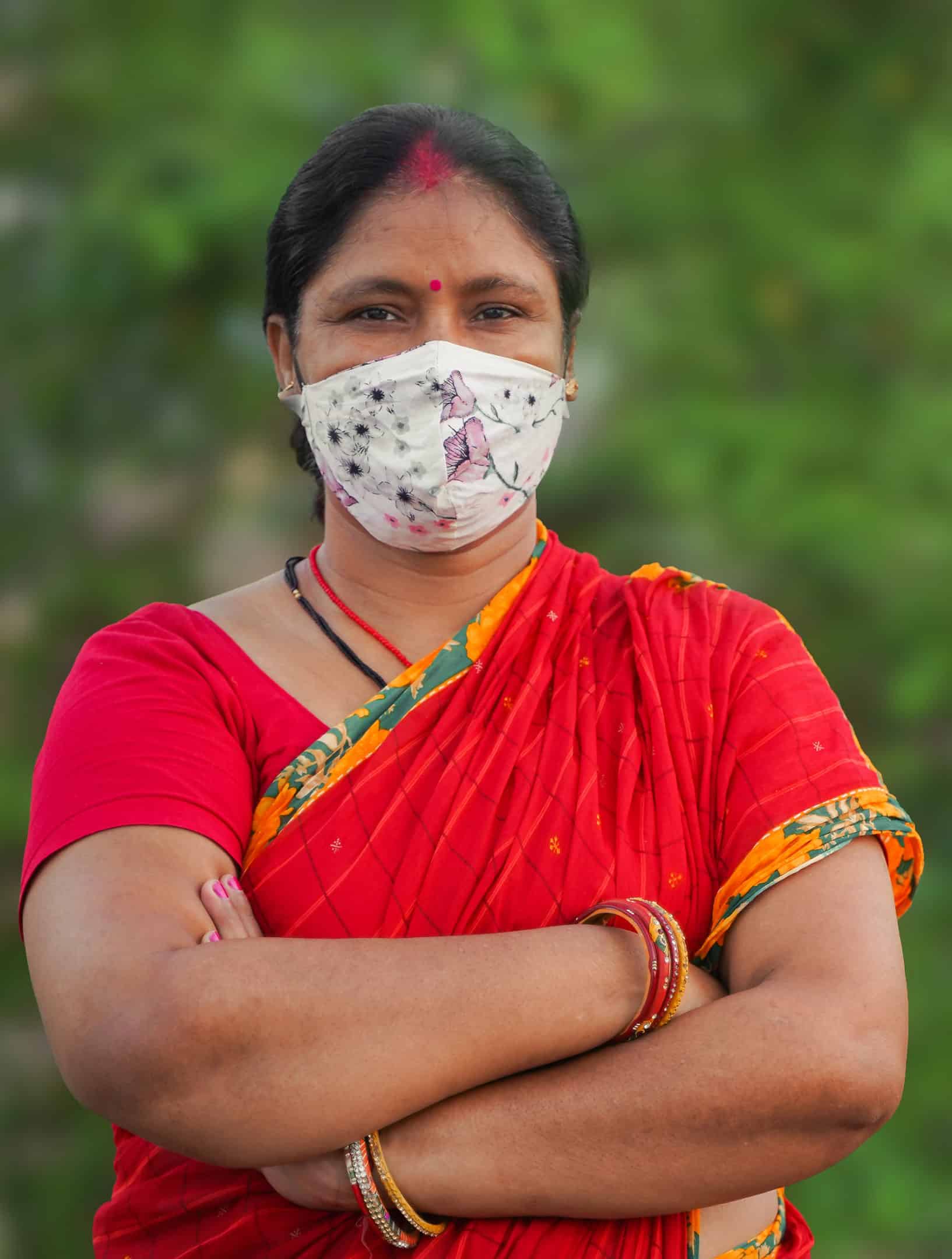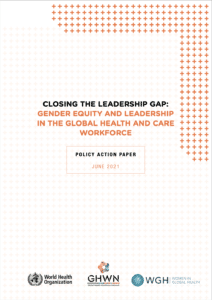Policy Action Paper: Closing the Leadership Gap
Women are almost 70% of the global health and social workforce but it is estimated they hold only 25% of senior roles. During the COVID19 pandemic women have provided much of the health and care, but have not had an equal say in decision making. This pervasive leadership gap between women and men in health can only be closed by addressing systemic barriers to women’s advancement.
This policy action paper, produced by the WHO Global Health Workforce Network’s Gender Equity Hub, (co-chaired by WHO, and Women in Global Health), outlines a framework for change across four action areas:
- Building a legal foundation for equality in the workplace;
- Addressing social norms and stereotypes;
- Addressing workplace systems and culture; and
Enabling women, who are the majority in the health and social care workforce to lead.
The primary target audience for this Policy Action Paper is national authorities and intersectoral policy-makers from all levels, as well organizational leaders, publishers, media, male allies, and women in the health and care workforce.

A framework for change: four action areas to support women’s leadership
- Build the foundation for equality: Governments must create the legal foundation for gender equality to enable women to engage equally with men at work. Laws and policies that address underlying causes of gender inequity are needed. The gender balance will not equalize on its own.
- Address social norms and stereotypes: Social norms and gender stereotypes drive much of the gendered segregation in the health and social workforce and the lower value placed on professions that are majority female. Gendered stereotypes of occupations and of leadership as a “man’s role” originate long before people join the workforce.
- Address workplace systems and culture: Interventions in this area in the past have focused on training for women in areas such as self-esteem and self-presentation, on the assumption that women needed to change to compete in systems and cultures designed for men. This ignored the systemic inequality, bias and exercise of power that favoured men for leadership roles.
- Enable women to achieve: Employers should put in place deliberate measures to enable women, who are the majority in the health and social care workforce, to apply for and achieve leadership positions equally and on merit.
Final Messages
- Global health and social care are delivered by women and led by men. We cannot address this inequality by changing women.
- There is no shortage of women in the health and care talent pipeline in most countries but gender inequality is systemic and will not change without deliberate action.
- Gender equal leadership in global health is the foundation for UHC, strong health systems and global health security.
- Organizations led by diverse groups (including women) have better results.
- Taking an intersectional approach is essential to understanding differences between women and factors such as race, caste, disability, class etc. that can multiply disadvantage.
- Leaders set the tone, and transparency is critical.
Commitments on equality in leadership have been made in the SDGs and other global agreements and need to be delivered. Accountability is key. - Beyond gender parity in leadership, all leaders must be gender-transformative leaders to catalyse change. COVID-19 threatens to undermine the gains women have made in health and care leadership.
- Since women deliver health and social care to around 5 billion people, ensuring equity in health and care leadership is everybody’s business.

